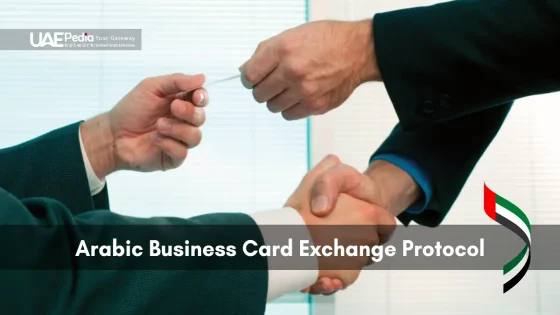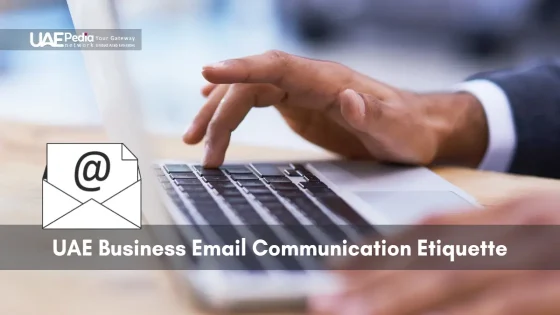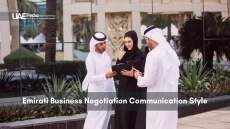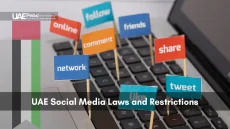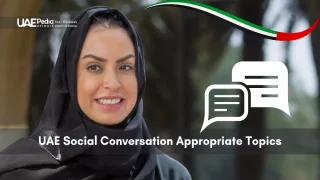What if a single piece of paper could unlock doors across Dubai boardrooms or Abu Dhabi networking events? In the Middle East, that’s exactly what happens when you hand over a well-crafted card—but there’s an art to doing it right.
First impressions here blend tradition with modern professionalism. Your card isn’t just contact info—it’s a gesture of respect. Many professionals overlook one critical detail: the unspoken rule of bilingual design. Cards typically feature English on one side and Arabic on the other, ensuring clarity while honoring local customs.
Regional nuances matter, too. How you present and receive these cards speaks volumes. A rushed handoff might signal disinterest, while taking a moment to study the details shows genuine engagement. Think of it as a cultural handshake—polished, intentional, and steeped in etiquette.
We’ll walk through every step, from designing your dual-language card to navigating exchanges with confidence. Consider this your backstage pass to building trust in Emirati professional circles.
- Bilingual cards (English/Arabic) signal respect and practicality in Middle Eastern networking.
- Card exchanges act as cultural rituals—pace and attention to detail matter as much as the information shared.
The Significance of Business Card Etiquette in Cross-Cultural Settings
Imagine handing over a small rectangle that speaks volumes before you’ve uttered a word. In global settings, this simple act can build bridges—or burn them. Cultural norms shape how professionals perceive gestures, turning every interaction into a silent test of awareness.
Why Cultural Norms Matter
In Japan, receiving a card with both hands signals reverence. In the UAE, placing it face-up during a meeting shows attentiveness. These rituals aren’t just formalities—they’re coded messages of respect. Skip them, and you risk appearing dismissive, even if your intentions are pure.
| Country | Key Practice | Symbolic Meaning |
|---|---|---|
| UAE | Present card with right hand | Honors local traditions |
| Japan | Study details before storing | Demonstrates genuine interest |
Impact on First Impressions
Your approach to card exchanges sets the tone. Fumble the handoff, and trust erodes. Handle it gracefully? You’ve laid groundwork for collaboration. One tech executive shared how a rushed exchange in Riyadh cost a deal—“They assumed we hadn’t done our homework.”
Need actionable tips? This guide to global etiquette breaks down nuances from bowing depths to handshake durations. Because in cross-cultural meetings, mastery of these micro-moments separates the prepared from the overlooked.
Read More:
Understanding the Cultural Context in the Middle East
Picture this: a bustling Dubai café where a simple gesture—like how you extend your credentials—can shape partnerships. The Middle East blends ancient hospitality with cutting-edge commerce, and every interaction carries layers of meaning. Here, tradition isn’t just nostalgia—it’s the backbone of trust.
Local Traditions and Practices
In the UAE, your hand matters—literally. Offering items with the right hand reflects respect, rooted in regional customs. Names hold weight, too. A meticulously printed name signals pride in identity, while rushed contact details might hint at carelessness. One executive shared, “They’ll study your credentials longer than you’d expect—it’s about gauging sincerity.”
Timing is equally deliberate. Rushing through an exchange? That’s like skipping the mint tea in a meeting—it leaves a sour aftertaste. Instead, pause. Let your counterpart absorb the details on each side of your materials. This small act mirrors the region’s value for thoughtful engagement.
Embracing Bilingual Communication
Why two languages? Arabic isn’t just a formality—it’s a bridge. An English-only side might work globally, but adding Arabic shows you’ve done the homework. Consider it a nod to both practicality and cultural IQ. As one designer noted, “Your left side (English) gets you in the door—the right side (Arabic) keeps you there.”
Need proof? Check this comparison:
| Element | English Side | Arabic Side |
|---|---|---|
| Name | Full Western format | Arabic script + titles |
| Contact | Global numbers | Local WhatsApp preferred |
For those eyeing long-term ties, aligning with these norms is step one. Dive deeper with our UAE market entry strategy guide—it’s packed with tips to avoid faux pas and foster genuine connections.
Mastering the Arabic Business Card Exchange Protocol
Ever watched someone fumble a handshake? Now imagine that tension with credentials in hand. In Gulf professional circles, the way you handle this ritual can seal deals or stall conversations before they begin.
Step-by-Step Protocol Overview
- Design First: Print your name and number in Arabic script on one side, English on the other. A Dubai-based HR manager notes: “Clients light up when they see their native language—it shows you value their comfort.”
- Right Hand Rule: Offer and receive materials with your right hand only—left-hand gestures carry unintended meanings here.
- Pause & Acknowledge: Don’t rush to pocket it. Glance at their details for 3-5 seconds. This silent moment says, “I see you.”
Presenting Your Card with Confidence
Your grip matters. Hold the top corners to avoid smudging text—especially language details. Position titles prominently: “Regional Director” holds more weight than “Sales Lead” in hierarchical settings.
| Do | Don’t |
|---|---|
| Use thick, matte paper | Hand out bent corners |
| Include WhatsApp number | List personal social media |
Practice flipping between language sides smoothly. One Abu Dhabi entrepreneur admits: “I rehearsed in front of a mirror—sounds silly, but it works.” For design inspiration, check these professional templates that balance clarity with cultural flair.
Designing and Preparing Your Business Cards
Picture walking into a Dubai conference room where every detail—from your cufflinks to your credentials—tells a story. Your card isn’t just paper; it’s a visual handshake that lingers long after meetings end. Let’s craft one that works as hard as you do.
Essential Information Guidelines
Think minimalist, not sparse. Your name, title, company logo, and direct contact details form the core. A UAE marketing director advises: “Skip the sales pitch—clarity builds trust faster than buzzwords.” Use local WhatsApp numbers (they’re preferred over email here) and verify every digit twice.
| Must-Have | Skip |
|---|---|
| Full Arabic name script | Home addresses |
| Local phone prefix (+971) | Personal social handles |
Including WhatsApp contacts increases response rates by 68% in UAE business communications Ref.: “Dubai Chamber of Commerce (2023). Digital Communication Trends in Emirati Business. DCC White Paper Series.”
Tips for Bilingual Design
Flip your card like a pro. The Arabic side should face up when handed over—this small pivot honors regional business etiquette. Use mirrored layouts so text aligns cleanly in both languages. One designer shares: “We test fonts at 40% opacity—if they’re readable then, they’ll shine in any lighting.”
Choose matte finishes over glossy—they feel luxurious and resist fingerprints. And always make sure to extend your card with the right hand while making eye contact. This combo of visual polish and physical grace turns routine swaps into memorable moments.
Essential Etiquette: The Right Hand Rule & Beyond
Ever wondered why a simple hand movement could make or break a deal in Dubai? In Middle Eastern professional circles, gestures carry invisible weight—like silent vows of mutual respect. Let’s decode these unspoken rules so your next interaction feels effortless.
Proper Hand Usage and Respectful Gestures
Your right hand isn’t just dominant here—it’s symbolic. Rooted in cultural traditions, it represents cleanliness and sincerity. Offering anything with your left? That’s like showing up to a gala in flip-flops. One Abu Dhabi consultant shares: “I’ve seen deals stall over a left-handed exchange—it’s not malice, just oversight.”
But it’s not just about hands. Eye contact seals the deal. Glance downward while handing over your information, and you risk seeming disengaged. Hold their gaze too long? That’s overstepping. Aim for a warm 2-3 seconds—think of it as a cultural handshake.
Other subtle moves matter:
- Never toss or slide credentials across a table
- Place received details face-up near your notebook
- Avoid writing on someone’s materials unless invited
Forget these rules, and you’ll stick out like a sandal at a black-tie event. But nail them? You’ll blend into local rhythms faster than a sunset over the Burj Khalifa. Pro tip: Practice flipping your credentials smoothly between hands during mock meetings. Muscle memory turns protocol into second nature.
“It’s not about perfection—it’s about showing you care enough to try.”
Navigating Business Meetings and Networking Events
Walk into a Riyadh conference room, and you’ll spot it instantly—the subtle dance of credentials swapping hands. Here, networking blends hierarchy with hospitality. Your moves during these moments can elevate partnerships or leave you sidelined.
When and How to Exchange Cards
Hierarchy rules. Always offer materials first to the highest-ranking attendee. In Doha or Dubai, waiting your turn shows awareness of local structures. A tech founder shared: “Handing mine to the CEO first opened doors—their team followed suit.”
| Country | Hierarchy Signal | Timing Tip |
|---|---|---|
| UAE | Senior executives first | After initial greetings |
| Japan | Exchange simultaneously | Before sitting down |
| USA | Casual order | During introductions |
Timing matters. In the Middle East, present during opening pleasantries—not mid-meeting. Pocketing credentials too fast? That’s like leaving a banquet before dessert. Pause. Glance. Nod.
Compare global styles:
- East Asia: Formal bows precede exchanges
- Europe: Quick handshakes, then materials
- Gulf States: Ritualistic pacing with tea service
Pro tip: At Abu Dhabi mixers, keep five crisp copies in your jacket’s outer pocket. Fumbling through bags breaks rapport. One consultant laughed: “I’ve seen folks drop theirs in hummus—don’t be that person.”
“Watch their eyes—if they glance at your title twice, you’ve nailed the design.”
Adapting Across Global Business Cultures
Think fast: You’re in Tokyo one week, Dubai the next. How you share your credentials shifts faster than airport departure boards. Let’s map these global nuances so you glide through meetings like a seasoned diplomat.
Contrasting Asian and Middle Eastern Norms
In Japan, colleagues treat every exchange like a tea ceremony. Two hands present the material, followed by a slight bow. One Tokyo-based consultant notes: “They’ll read every line—silence means respect, not disinterest.”
Middle Eastern counterparts? More fluid. A right-handed pass suffices, but pause to acknowledge titles. While Asian rituals emphasize formality, Gulf States blend tradition with modern efficiency. Check the contrasts:
| Aspect | Tokyo | Dubai |
|---|---|---|
| Presentation Style | Two hands + bow | Right hand only |
| Reading Time | 2-3 minutes | 10-15 seconds |
European and North American Insights
Germany values precision—flawless translations and exact titles matter. France? A quick handshake, then materials go straight to pockets. North American colleagues often swap during casual chats, treating it as admin rather than ritual.
One New York exec laughed: “We’ve handed them over Uber receipts! It’s about the info, not the paper.” But in Munich, people might judge font choices as harshly as your proposal.
Pro tips for chameleon-like adaptation:
- Pack separate designs for formal (Asia) and concise (US) markets
- Watch where colleagues place received materials—desk (respect) vs. pocket (routine)
- End exchanges with a sincere “Looking forward” in the local language
“The best global players dance between cultures—they don’t just follow steps.”
Practical Tips for a Seamless Business Card Exchange
Ever stepped into a room where timing is everything? In Middle Eastern meetings, that first credential handoff sets the rhythm. Let’s map out how to ace this dance without missing a beat.
Timing Your Exchange Effectively
Pass your details too early, and you’ll interrupt the flow. Wait too long, and the moment slips away. Sweet spot? After initial greetings but before sitting down. A Dubai event planner advises: “Hand yours over as the mint tea arrives—it’s the cultural green light.”
| Region | Ideal Timing | Watch For |
|---|---|---|
| UAE | Post-handshake, pre-seating | Host’s cue to begin |
| USA | During introductions | Casual transitions |
Double-check your title and address beforehand. One typo here could unravel trust built over weeks.
Maintaining Professional Hierarchies
Rank matters. Always extend materials to the senior-most attendee first—it’s like saving the best date on the menu for VIPs. A consultant shared: “In Abu Dhabi boardrooms, ignoring this order shouts ‘newbie.’”
- UAE: CEO → Department heads → Team
- Japan: External partners before internal staff
Avoiding Common Etiquette Mistakes
Left-hand passes still trip up 40% of visitors. Other pitfalls? Failing to read received details, or worse—stuffing them straight into pockets. Keep your relationship building smooth:
| Do | Don’t |
|---|---|
| Store in dedicated case | Jumble with receipts |
| Confirm college degrees listed | Assume titles match LinkedIn |
At networking events, keep five copies in your jacket’s outer pocket. Why five? “You’ll always meet that sixth person,” laughs a Dubai recruiter. “Be ready.”
“The beginning of any partnership hinges on these micro-gestures—nail them, and the rest follows.”
Final Takeaways for Successful Professional Networking
Think of your next networking event as a global stage—every gesture writes your professional story. Whether navigating Tokyo’s formal boardrooms or Riyadh’s fast-paced mixers, small acts of cultural awareness build lasting trust. Let’s break down what sticks.
First, design matters. A well-crafted japanese business card demands two-handed reverence, while Gulf States prioritize crisp bilingual details. In east business hubs, titles carry weight—print them prominently. One tech founder shared: “My Tokyo partner kept my credentials on the table all meeting—that’s the ultimate compliment.”
Second, adapt your delivery. Present card materials right-handed in Dubai, but bow slightly in Seoul. Saudi professionals value eye contact during exchanges—glance away, and you’ve missed a cue. As one consultant noted: “In Asia, it’s ritual. In the Emirates, it’s rhythm.”
Finally, practice makes polished. Role-play exchanges with colleagues—awkward rehearsals beat real-world fumbles. Track regional quirks: Japanese peers study credentials longer, while New Yorkers prioritize speed. Master these beats, and you’ll sync with any business culture.
Ready to level up? Start by updating your materials with local scripts, then host mock exchanges over coffee. Global networking isn’t about perfection—it’s showing you care enough to try. Now go write your next chapter.
In Middle Eastern cultures, the right hand is traditionally considered clean and respectful for gestures like handing items. Offering your card with the left might unintentionally signal disrespect—keep it simple and lead with your right!
Absolutely! A bilingual card (English/Arabic) shows effort to connect locally. Ensure translations are accurate—ask a native speaker to proofread titles and contact details. Bonus points for gold foil accents on dark cardstock!
Wait until introductions are complete and hierarchy acknowledged—senior figures often exchange first. Hold the card with both hands, Arabic side facing the recipient, and pause to let them review it before storing it neatly (never pocket it immediately!).
While Japan emphasizes bowing and meticulous card handling, Gulf cultures prioritize warm verbal greetings and card placement in a dedicated holder. Avoid writing on Arabic cards—it’s seen as defacing someone’s professional identity.
Rushing the exchange! Take time to admire the card you’re given—comment on the design or title. Treating it as a transactional formality can feel impersonal. Think of it as sharing a mini résumé, not just contact info.
Yes, but wait 24 hours. Reference your meeting details in a brief WhatsApp or email, and use formal titles until invited to switch to first names. A “Shukran” (thank you) in your message adds a thoughtful local touch.
